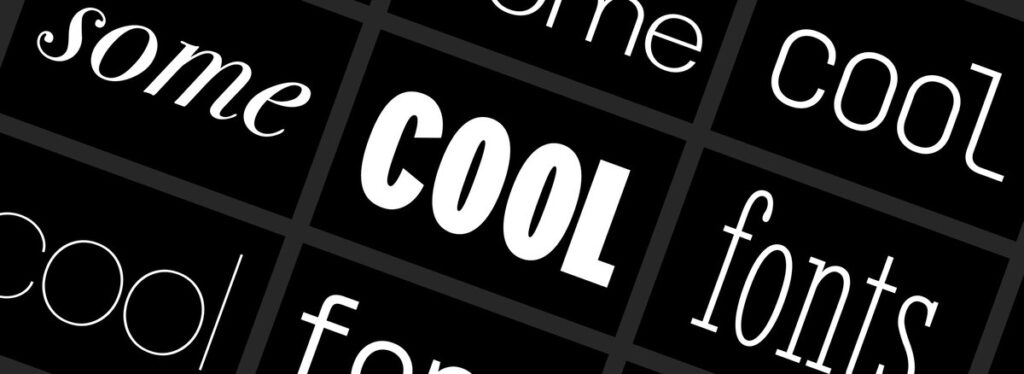In 2025, website speed is a top priority. Users want fast-loading pages. Search engines like Google reward quick sites with better rankings. One factor that can quietly affect your site’s speed? The fonts you use.
Web fonts can slow things down if they’re not chosen carefully. When a browser loads your site, it downloads font files. Large or poorly optimized fonts mean longer wait times. That’s bad news for user experience and SEO.
The good news? You don’t have to sacrifice style for speed. In this post, we’ll look at the top 10 web fonts that won’t slow down your site in 2025. These fonts are fast, readable, and versatile. They work for blogs, business sites, or online stores. Plus, they keep your site looking sharp.
This guide is packed with details. You’ll get font descriptions, performance tips, and practical advice. Let’s get started.
Why Fonts Affect Site Speed
Fonts might seem small, but they play a big role in performance. Here’s how:
-
Downloading Files: Web fonts need to be fetched from a server. Bigger files take longer.
-
Rendering Delays: If fonts load slowly, text might not show up right away.
-
User Impact: Slow sites frustrate visitors. They might leave before your content loads.
System fonts—like Arial or Georgia—are already on a user’s device. No download needed. That makes them super fast. But they can feel basic or overused.
Custom web fonts—like those from Google Fonts—add personality. The trick is picking ones that load quickly. Lightweight files and smart hosting keep them speedy.
How We Picked These Fonts
We didn’t just grab random fonts. We used clear criteria:
-
Speed: Fonts must be lightweight or pre-installed (system fonts).
-
Readability: They need to look good on all screens—phones, tablets, desktops.
-
Flexibility: They should fit different site types, from blogs to shops.
-
Access: They’re easy to use, either built-in or from trusted sources like Google Fonts.
With that in mind, here are the winners.
You may also like to read about Lazy Loading Images vs Preloading.
The Top 10 Web Fonts for 2025
1. Open Sans
What It Is: A sans-serif font by Steve Matteson. Clean and modern.
Why It’s Fast: Available on Google Fonts. Optimized for web use. Small file size.
Key Features:
-
Big lowercase letters for easy reading.
-
Lots of weights (light, regular, bold).
-
Works for body text or headings.
Best Use: Blogs, business sites, or apps.
Why We Like It: Open Sans is a web design favorite. It’s clear and loads fast. Perfect for keeping your site snappy in 2025.
2. Roboto
What It Is: A sans-serif font by Christian Robertson. Google’s Android default.
Why It’s Fast: Google Fonts hosts it. Built for quick loading.
Key Features:
-
Straight lines with soft curves.
-
Many styles (thin to extra bold).
-
Modern yet friendly look.
Best Use: Tech sites, mobile designs, or stores.
Why We Like It: Roboto feels fresh and professional. Its speed makes it a top pick for 2025 sites.
3. Lato
What It Is: A sans-serif font by Łukasz Dziedzic. Warm and approachable.
Why It’s Fast: Google Fonts optimized. Lightweight design.
Key Features:
-
Rounded edges for a cozy feel.
-
Great for small or large text.
-
Multiple weights available.
Best Use: Personal blogs, portfolios, or small businesses.
Why We Like It: Lato’s charm doesn’t hurt performance. It’s quick and easy on the eyes.
4. Montserrat
What It Is: A sans-serif font by Julieta Ulanovsky. Inspired by urban signs.
Why It’s Fast: Google Fonts delivery. Small, efficient files.
Key Features:
-
Sharp, geometric style.
-
Ideal for bold headings.
-
Many weights and variations.
Best Use: Creative sites, logos, or headers.
Why We Like It: Montserrat stands out without slowing you down. A stylish choice for 2025.
5. Inter
What It Is: A sans-serif font by Rasmus Andersson. Made for screens.
Why It’s Fast: Variable font tech. One file covers all styles. Fewer downloads.
Key Features:
-
Tall letters for clear reading.
-
Adjustable weights in one package.
-
Perfect for interfaces.
Best Use: Apps, dashboards, or tech sites.
Why We Like It: Inter’s efficiency is next-level. Fewer files mean faster load times.
6. Source Sans Pro
What It Is: A sans-serif font by Paul D. Hunt. Adobe’s open-source gem.
Why It’s Fast: Variable font option. Optimized for web.
Key Features:
-
Simple, modern lines.
-
Great for text or titles.
-
Single-file flexibility.
Best Use: Content sites, interfaces, or portfolios.
Why We Like It: Source Sans Pro is clean and quick. A solid pick for speed in 2025.
7. Merriweather
What It Is: A serif font by Eben Sorkin. Built for screen reading.
Why It’s Fast: Google Fonts hosting. Light file size.
Key Features:
-
Thick serifs for clarity.
-
Works for long articles.
-
Multiple styles available.
Best Use: Blogs, news sites, or ebooks.
Why We Like It: Merriweather proves serifs can be fast. It’s great for text-heavy pages.
8. Playfair Display
What It Is: A serif font by Claus Eggers Sørensen. Classic and elegant.
Why It’s Fast: Google Fonts optimized. Use it sparingly for best speed.
Key Features:
-
High contrast for a fancy look.
-
Best for big headings.
-
Several weights to choose from.
Best Use: Luxury sites, titles, or branding.
Why We Like It: Playfair adds flair without dragging your site down. Pair it wisely.
9. Arial
What It Is: A sans-serif font. Comes with most devices.
Why It’s Fast: System font. No download needed.
Key Features:
-
Plain, neutral style.
-
Readable at any size.
-
Works everywhere.
Best Use: Simple sites, backups, or body text.
Why We Like It: Arial is the speed king. It’s instant and reliable.
10. Georgia
What It Is: A serif font by Matthew Carter. Made for screens.
Why It’s Fast: System font. Already installed.
Key Features:
-
Bold serifs for easy reading.
-
Great for paragraphs.
-
Classic yet modern vibe.
Best Use: Articles, blogs, or professional sites.
Why We Like It: Georgia is fast and polished. A timeless choice for 2025.
Real-World Examples
Seeing these fonts in action helps. Here’s how they shine:
-
Open Sans: Used by many tech blogs. Loads fast, looks crisp.
-
Roboto: Powers Android sites. Keeps things smooth and quick.
-
Merriweather: Popular on news platforms. Handles long reads well.
-
Arial: A fallback for e-commerce. No delays, just results.
These fonts prove you can have beauty and speed. They’re battle-tested across industries.
How to Add These Fonts to Your Site
Getting these fonts live is simple. Here’s how:
Google Fonts Method
Most of our list (Open Sans, Roboto, etc.) comes from Google Fonts.
Steps:
-
Visit Google Fonts.
-
Pick your font. Select weights you need.
-
Grab the <link> code. Paste it in your site’s <head>.
-
Add it to CSS: font-family: ‘Open Sans’, sans-serif;.
Why It Works: Google’s servers are fast. Files are optimized.
System Fonts Method
For Arial and Georgia, no setup needed.
Steps:
-
In CSS, write: font-family: Arial, sans-serif;.
-
Done. It’s already on the user’s device.
Why It Works: Zero download time. Instant loading.
Self-Hosting Option
Want control? Host fonts yourself.
Steps:
-
Download font files (e.g., WOFF2 format).
-
Upload to your server.
-
Link in CSS:
@font-face { font-family: 'Lato'; src: url('/fonts/lato.woff2') format('woff2'); }
Why It Works: Cuts third-party calls. You manage caching.
Pairing Fonts for Better Design
Mixing fonts can make your site pop. Here’s how to do it right:
-
Serif + Sans-Serif: Try Merriweather (body) with Montserrat (headings). Contrast looks sharp.
-
Same Family: Use Roboto Regular for text and Roboto Bold for titles. Keeps it cohesive.
-
Size Match: Pick fonts with similar lowercase heights. Looks balanced.
Top Pairs:
-
Playfair Display (headings) + Arial (body).
-
Lato (headings) + Georgia (body).
-
Inter (body) + Montserrat (headings).
Test your pairs. Make sure they feel right for your brand.
Picking the Perfect Font
Not sure which font fits? Ask these:
-
What’s Your Vibe? Fun sites might pick Lato. Serious ones might go Georgia.
-
Is It Readable? Test on phones and laptops. Small text should stay clear.
-
How Fast Is It? System fonts win here. Web fonts need optimization.
Your font sets the tone. Choose one that matches your goals.
Speeding Up Font Loading
Even fast fonts need smart setup. Try these tips:
-
Limit Styles: Only load weights you use. Skip extras.
-
Use font-display: swap;: Shows backup text while fonts load. Add to CSS:
@font-face { font-family: 'Roboto'; src: url('roboto.woff2') format('woff2'); font-display: swap; } -
Host Locally: Self-hosting can beat Google Fonts if cached well.
-
Test It: Use tools like Google PageSpeed Insights. Check font impact.
Small tweaks, big speed gains.
Why These Fonts Matter in 2025
Speed isn’t just nice—it’s a must. Google’s Core Web Vitals track load times. Slow sites lose rank. Users bounce from laggy pages. Fonts are a hidden key.
These top 10 web fonts solve this. They’re proven, practical, and pretty. Whether you pick Inter for its tech edge or Georgia for its instant load, you’re set.
Bonus Tips for Font Success
-
Check File Size: Web fonts should be under 100KB per style. Smaller is better.
-
Fallback Fonts: Add backups in CSS: font-family: ‘Lato’, Arial, sans-serif;. Covers all bases.
-
Update Regularly: New font versions might be lighter. Stay current.
Keep tweaking. A fast site keeps users happy.
Wrapping Up
Fonts shape your site’s look and feel. They also affect its speed. In 2025, you can’t ignore performance. The above top 10 web fonts give you options. From Open Sans to Georgia, they’re fast and functional.
Pick one. Test it. Pair it. Optimize it. Your site will load quick and look great. Users will stick around. Search engines will notice.
Which font will you try first? Let these top picks guide your next design.


